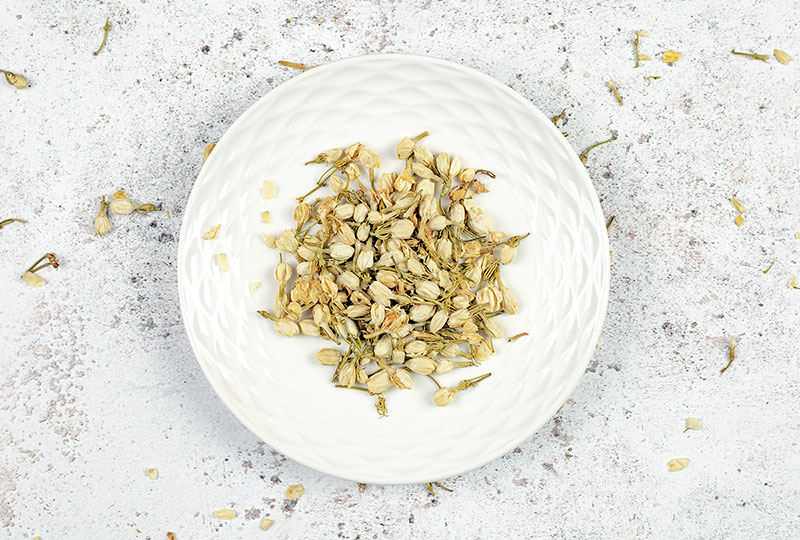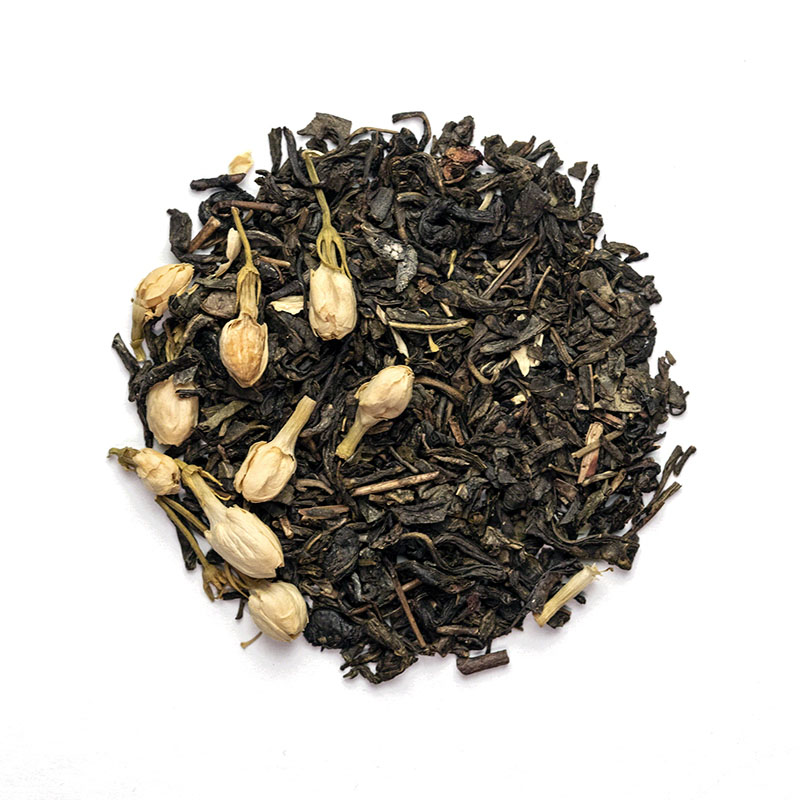Best Jasmine Teas 2021
When all you need is a cup of delightful refreshing tea with gentle floral notes, there’s no better tea to drink than jasmine tea. This classic, flavorful tea is one of the most popular scented teas in the world. Learn more about jasmine tea, how to brew it properly and what are the must-try teas.
What is jasmine tea?
Jasmine tea can be both pure floral tea or jasmine scented or flavored real tea. Today, there are more than just a few types of jasmine tea.
Traditionally, the name jasmine tea usually implies jasmine scented Camellia sinensis green tea. Traditional jasmine scented green tea comes from China and it’s called Mo Li Hua Cha or jasmine flower tea. Green tea leaves are scented using real, fresh jasmine blossoms. Other countries are making their types of jasmine tea too. Jasmine tea has a very long history, and it can be considered a link between pure and flavored teas. Because of a very complicated production process, jasmine scented green tea is usually considered more superior to jasmine flavored teas.
Pure jasmine herbal tea is made by infusing dried jasmine blossoms in hot water. This type of floral tea is not as popular as jasmine scented tea. If you decide to buy pure jasmine blossoms for making tea, be careful. Some are not intended for drinking any many have an unpleasant or even very bitter flavor. That’s because jasmine blossoms are sometimes used as pot-pourri or confetti.
The third type of jasmine tea is tea only blended with jasmine blossoms or flavored with natural or artificial jasmine flavors. Flavored tea may have a stronger jasmine flavor, while loose leaf tea that’s only been blended with jasmine blossoms may only have a light floral note.
Jasmine is most commonly used for scenting green tea, but other types of tea can be used too. For example, jasmine white tea is incredibly light and refreshing. Silver needle tea is often a white tea of choice for scenting with jasmine blossoms. Although rare, jasmine oolong teas are available too.
What qualities should I look for in a great tea?
Every great tea should be awakening all your senses – that includes the scent, flavor and appearance. Even if you don’t like some specific type of tea, it should still be aromatic, flavorful and fresh-looking. For example, maybe you don’t like the flavor of rose tea, but tea leaves of every rose scented tea should have a recognizable aroma once you place them into a preheated teapot. The same is true for jasmine tea too. Some jasmine teas may have a very strong jasmine note, others may be more delicate. The final flavor will depend on the skills of a tea producer and other factors such as quality of tea leaves and flowers.
If you want to choose the best jasmine tea, pay attention to the following:
-
Dry leaf
Traditional jasmine tea is only scented, not blended with jasmine flowers. However, sometimes you may find some jasmine petals blended with tea leaves. There are some specific jasmine scented green teas that may contain more blossoms such as Bi Tan Piao Xue tea. Teas that contain whole jasmine blossoms are likely unscented and blended/flavored only. How to know a difference? Scented teas may contain both full blossoms and almost always broken petals, while teas only blended with jasmine blossoms will usually contain unbroken plump blossoms only.
-
Scent
All real tea should have a pleasant scent. Sometimes, especially with green tea, you may not notice the strong scent immediately upon opening a pouch. However, once you place your tea leaves in a preheated teapot, they should always have a strong and pleasant scent. Jasmine tea will have an aromatic jasmine note that shouldn’t be overpowering.
-
Flavor
If you brew it properly, jasmine scented green tea should not be bitter. It should have a light and airy floral touch, never an overpowering artificial flavor. Green tea leaves will have a big impact on the flavor too. Jasmine green tea can be made from different green teas with sometimes stronger, smoky notes.
-
Color
Jasmine scented green tea will usually have a slightly more yellow and dark color, but similar to bolder green teas. However, color should be clear and vibrant, rather than brown or murky yellow.
Best Jasmine Teas
Ready to explore different jasmine teas? Here are our top picks:
Jasmine Green
A traditional type of Jasmine scented green tea, with a strong, bold but smooth green tea leaves gently scented with jasmine blossoms. This tea is great for both regular brewing and cold-brewing.
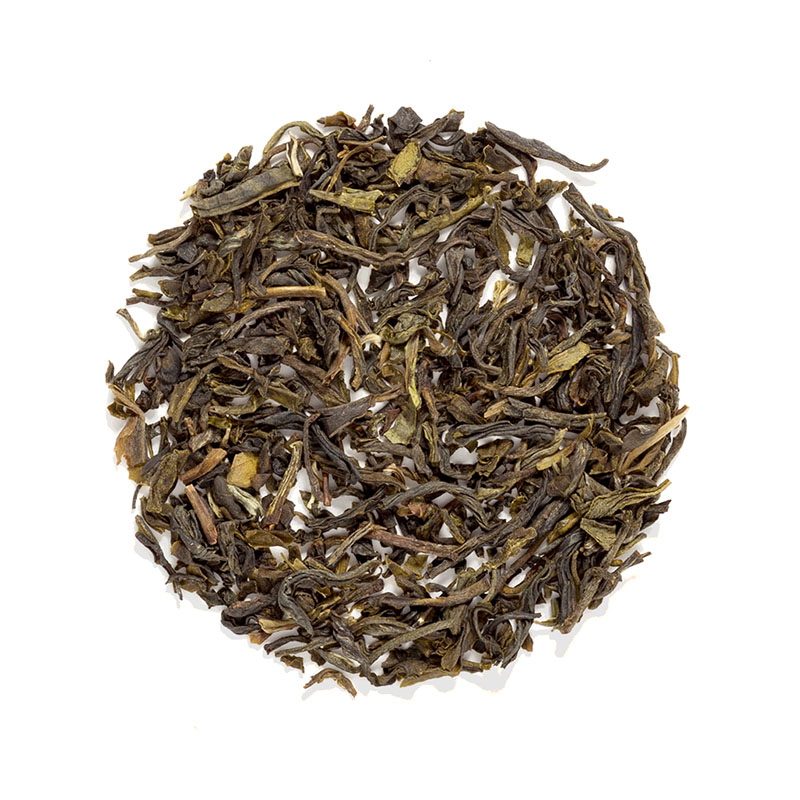
Jasmine Green tea
Purple Jasmine
A truly unique blend created with flavor and benefits in mind. A blend of jasmine scented green tea and purple black tea from Kenya is far from an ordinary cup. Purple tea is made from new tea plants, unique because of high levels of anthocyanin – the same antioxidant found in blueberries, red cabbage or black currants.
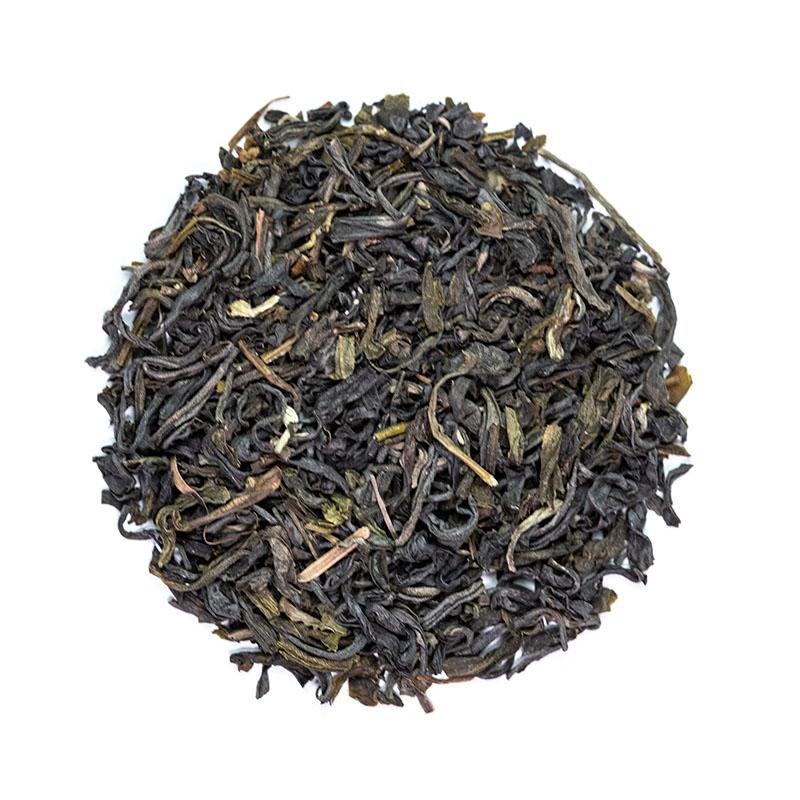
Purple Jasmine tea blended with green jasmine tea
Green Harmony
Green Harmony is a blend of three distinctive teas that you would rarely see blended together – Chinese jasmine green tea, Japanese hojicha and sencha, infused with a light citrus flavor. The result is what really surprises – a pure, light, blissful harmony of floral, smoky, roasted, citrusy, fresh and vegetal flavors. Perfect for both hot and cold brewing and a great example of how jasmine scented tea can be blended with other teas.
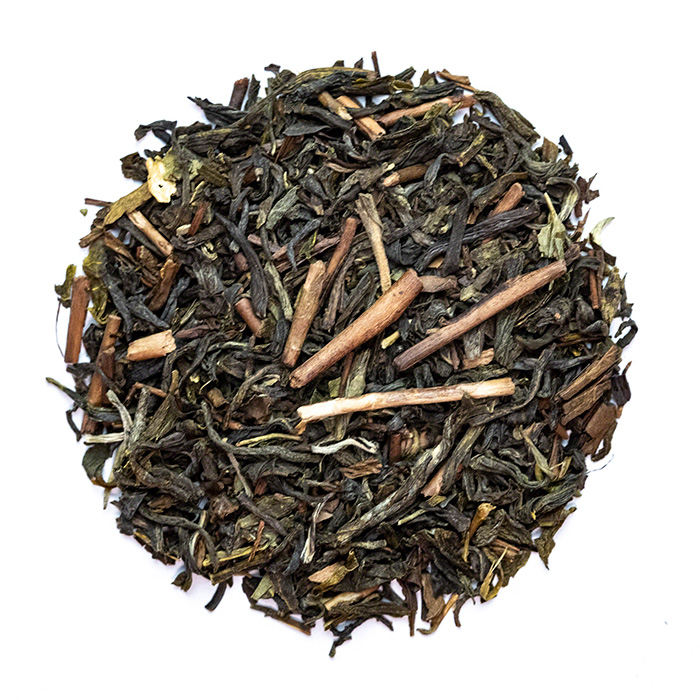
Green Harmony tea blend with 3 types of green tea
Blackberry Jasmine
Not all jasmine teas are the same. Blackberry Jasmine takes a very bold step forward from a regular classic jasmine scented green tea and gives it a one more layer of tastiness. The base of this tea is a mild, smooth and bold unscented Young Hyson green tea perfected with dry jasmine blossoms and freeze-dried blackberries. Wonderful both hot and cold. Sweet, floral, earthy, and tart.
Jasmine Pearl Tea
Dragon pearls or jasmine pearls tea is probably one of the most popular unusual teas in the world. Green tea leaves are scented with jasmine flowers, then rolled into small tightly rolled balls resembling pearls. This tea can be re-steeped several times until leaves fully open.
How to Make Jasmine tea
When making a cup of jasmine tea, it’s essential to use high quality water. Hard tap water may cause a murky cup with too strong mineral flavor, while distilled water may be too flat for aromatic jasmine tea. If possible, choose fresh spring water.
Bring fresh spring water to a boil. Preheat your teapot or a mug by pouring hot water in and out of your teapot or a mug. Use about 1-2 teaspoons of tea leaves per cup of water. Using less leaves will give a gentler cup. If you are brewing jasmine scented green tea, steep for 2-3 minutes at 167–175°F. Jasmine tea tastes delicious without any condiments, but if you like your tea sweet, try adding a bit of raw honey. You can re-steep the same tea leaves once or twice, but expect a slightly lighter flavor.
If you want to make a light refreshing tea that you can drink throughout the day, try cold-brewing. Jasmine scented green tea is one of the best teas for cold-brewing. Use larger jug or a pitcher with a cover, wash it thoroughly. Add 1-2 tablespoons of tea leaves. 1 rounded tablespoon will be enough for 1.-1.5 litre of water. Add lukewarm or cold water, cover and let it steep in the fridge for at least 3 hours. The longer you steep it, the more flavor it will have, but never longer than 24 hours.
Always cover your jug when cold-brewing. Tea leaves are famous for their ability to neutralise odours, and that means your tea is likely to catch scents of food from your fridge. Cold-brewing a great way of making tea when you don’t have enough time for making a regular iced tea. Besides, cold-brewed tea will rarely turn bitter.
Learn more
Want to know more about jasmine tea? Learn what are the potential health benefits of drinking jasmine tea and does jasmine tea have caffeine.



